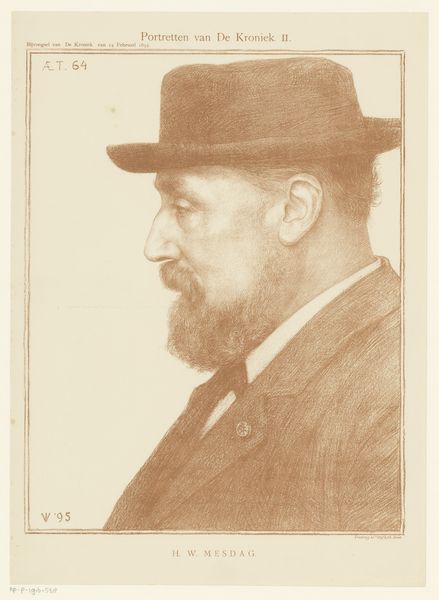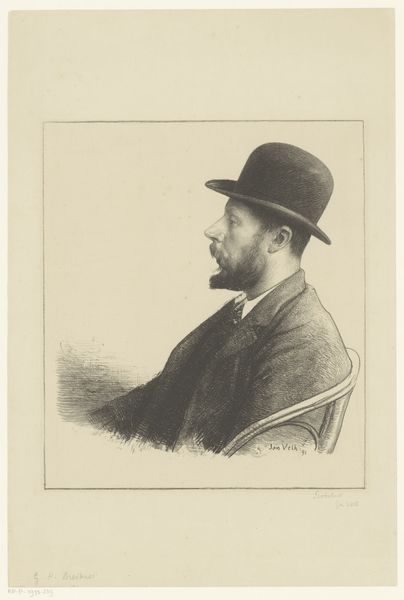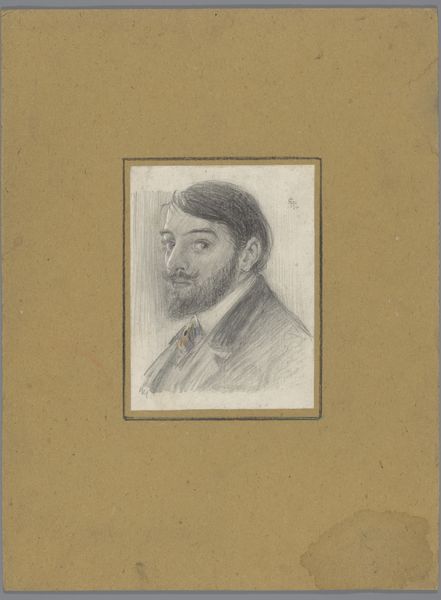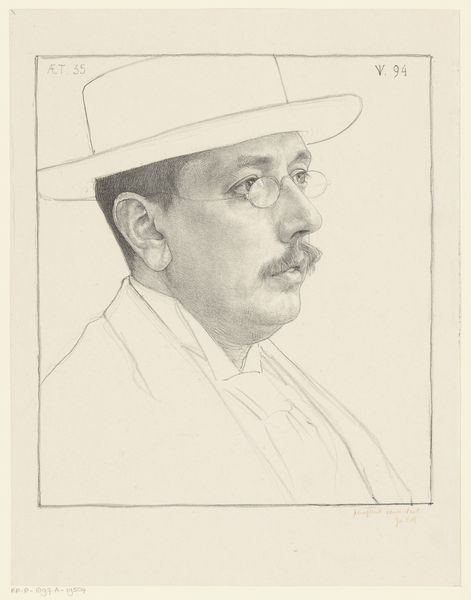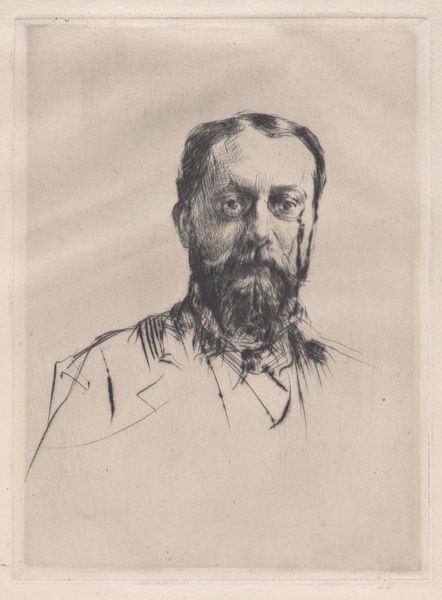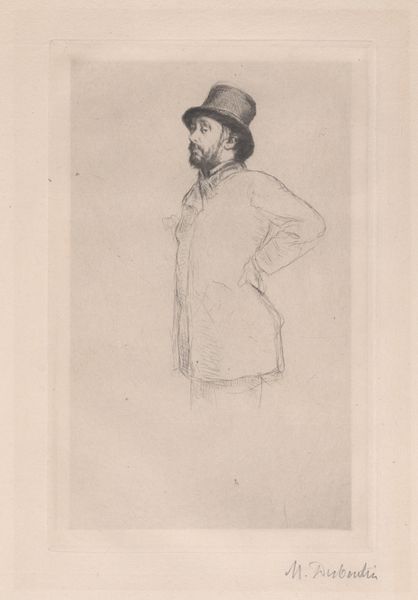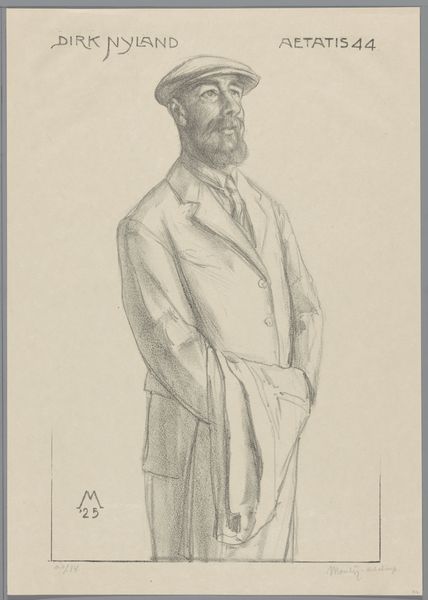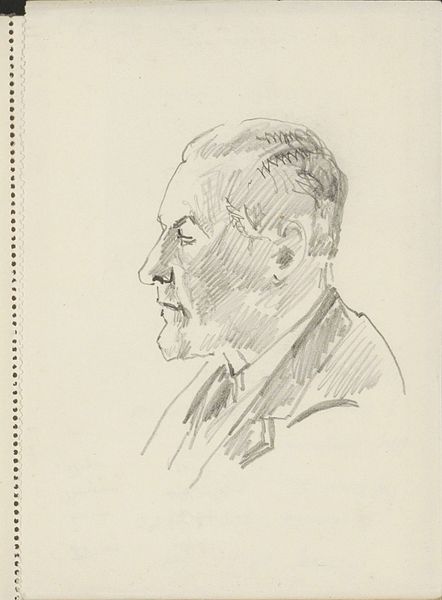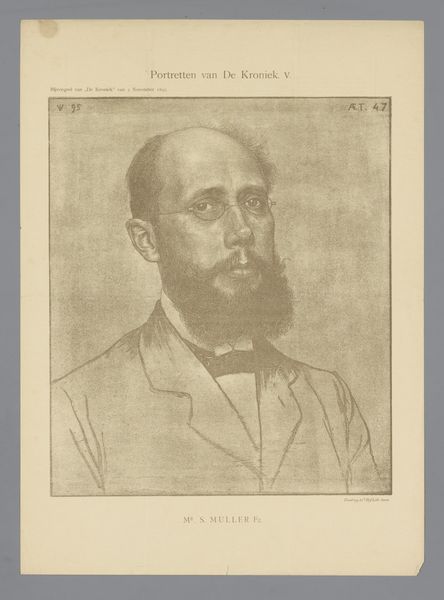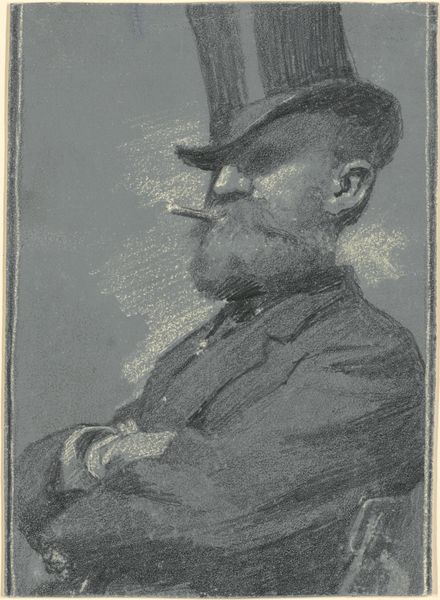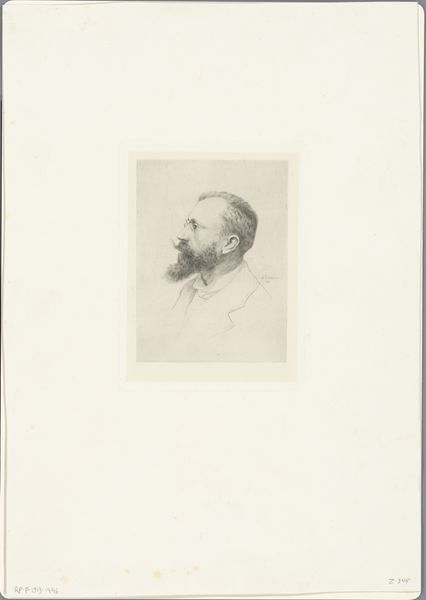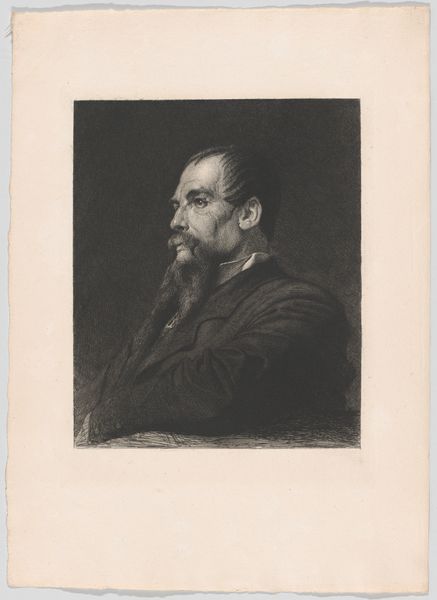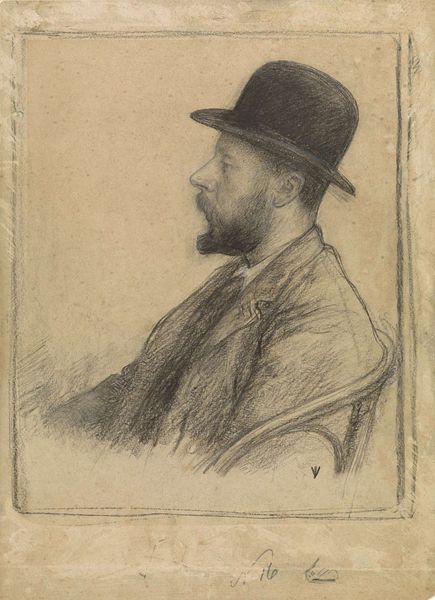
drawing, pencil
#
portrait
#
pencil drawn
#
drawing
#
self-portrait
#
pencil drawing
#
pencil
#
portrait drawing
#
academic-art
#
realism
Dimensions: height 385 mm, width 280 mm
Copyright: Rijks Museum: Open Domain
Editor: Here we have Jan Veth's 1895 pencil drawing, "Portret van Hendrik Willem Mesdag," at the Rijksmuseum. It feels incredibly meticulous, almost photographic in its detail. What strikes you most about this drawing? Curator: What grabs my attention is the intense labor embedded in this drawing. Look at the density of the pencil strokes, creating tonal variations to suggest form. The means of production become foregrounded. How does the academic style interact with, perhaps even elevate, what might be considered a more commonplace material – the pencil? Editor: I see what you mean! Pencils are so ordinary, yet the rendering here is extraordinary. Is it commenting on the status of portraiture at the time? Curator: Precisely. Consider the social context. Portraits were often commissioned symbols of status and wealth. However, using a 'lowly' material like pencil raises questions. Is it a commentary on the accessibility of art? Or is it elevating the sitter, Mesdag, by depicting him with such painstaking care, defying traditional, more opulent modes of representation? Also, note the implied labor involved in creating this hyper-realistic drawing by hand in a period that was rapidly being changed through new technology. Editor: That makes so much sense. I hadn't considered how the material itself could be making such a powerful statement. I guess I assumed that the labor implied just spoke to the virtuosity of the artist. Curator: Think of art production as labor. By understanding what constitutes "work" we begin to recognize what value judgements we impose. The sheer quantity of lines suggests an artist highly focused on translating the social standing of the subject. The art isn't just 'in' the portrait, but how that image relates to class and capital through labor and its subsequent circulation through the market. Editor: I see this in a new light now, looking at it from the perspective of the labor and social implications of materials. Thanks! Curator: Absolutely. Hopefully it has shed new light onto how to consider materiality beyond basic technical skill.
Comments
No comments
Be the first to comment and join the conversation on the ultimate creative platform.
